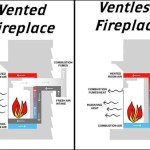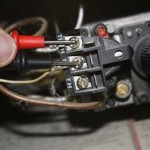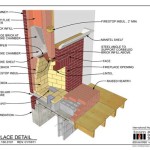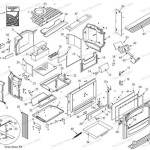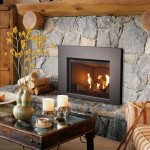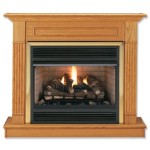Wood Fireplace Inserts With Blower: Enhancing Heating Efficiency and Home Comfort
Wood fireplace inserts offer a practical and aesthetically pleasing solution for homeowners seeking to improve the heating efficiency of their existing fireplaces. By transforming an open hearth into a closed combustion system, these inserts significantly reduce heat loss up the chimney and provide a more controlled and consistent heat output. A crucial feature in many modern wood fireplace inserts is the inclusion of a blower, which further enhances the distribution of heat throughout the living space.
Traditional open fireplaces, while visually appealing, are notoriously inefficient. A significant portion of the heat generated escapes directly up the chimney, resulting in minimal warmth radiated into the room. This inefficiency translates to higher heating costs and a reliance on supplemental heating sources to maintain comfortable temperatures. A wood fireplace insert addresses this issue by creating a sealed firebox within the existing fireplace opening. This controlled environment allows for more complete combustion of the wood, maximizing heat production and minimizing emissions. The insert's design traps heat, preventing it from escaping up the chimney and directing it outwards into the room.
The addition of a blower to a wood fireplace insert further amplifies its heating capabilities. The blower, typically an electric fan, forces air across the heated surfaces of the firebox and then circulates the warmed air into the surrounding room. This forced-air circulation ensures that heat is distributed more evenly and efficiently, eliminating cold spots and providing consistent warmth throughout the living area. Units without a blower rely solely on radiant heat, which is less effective at heating larger spaces or rooms with poor air circulation.
Efficiency Gains with Blowers
One of the primary advantages of a wood fireplace insert with a blower is the significant increase in heating efficiency. As mentioned previously, traditional open fireplaces often have efficiencies as low as 10-20%, meaning that only a small fraction of the heat produced actually contributes to warming the room. Wood fireplace inserts, in contrast, can achieve efficiencies of 70% or higher, representing a substantial improvement. The blower plays a crucial role in achieving these higher efficiencies by accelerating the transfer of heat from the insert to the surrounding environment.
The mechanics of heat transfer within a standard wood fireplace insert without a blower rely primarily on radiant heat and natural convection. Radiant heat warms objects directly in front of the fireplace, while natural convection involves the slow movement of warm air rising and cooler air sinking. However, these methods can be slow and uneven, resulting in temperature variations throughout the room. The blower overcomes these limitations by actively forcing air circulation. The fan draws cooler air from the floor level, passes it over the hot surfaces of the firebox, and then expels the warmed air back into the room at a higher velocity. This forced circulation ensures that heat is distributed more quickly and evenly, reducing stratification and creating a more comfortable living environment.
Furthermore, the blower allows the insert to heat a larger area more effectively. Without the blower, the heating range of the insert is limited to the immediate vicinity of the fireplace. The forced-air circulation provided by the blower extends the heating zone, allowing the insert to warm multiple rooms or a larger open-plan living space. This increased heating capacity can reduce the reliance on central heating systems, leading to potential cost savings on energy bills. The blower essentially acts as a supplemental heating system, capable of maintaining a comfortable temperature throughout a significant portion of the home.
The precise efficiency gains achieved with a blower will vary depending on several factors, including the size of the insert, the blower's airflow capacity (measured in cubic feet per minute, or CFM), the insulation of the home, and the desired room temperature. However, in general, a wood fireplace insert with a properly sized blower will provide significantly more effective and efficient heating than a traditional open fireplace or an insert without a blower.
Controlling Heat Output and Comfort
In addition to enhancing heating efficiency, wood fireplace inserts with blowers offer greater control over heat output and overall comfort. Many models feature adjustable blower speeds, allowing homeowners to fine-tune the amount of heat circulated into the room. This level of control is particularly useful in adapting to varying weather conditions and personal preferences.
On colder days, the blower can be set to a higher speed to maximize heat output and maintain a comfortable temperature throughout the day. Conversely, on milder days or when the room reaches the desired temperature, the blower speed can be reduced to prevent overheating and conserve energy. Some advanced models even incorporate thermostats that automatically adjust the blower speed based on the room temperature, providing a truly hands-free heating experience.
The ability to control the airflow also contributes to a more comfortable living environment. By regulating the speed of the blower, homeowners can minimize drafts and prevent the air from becoming too dry. A high blower speed can sometimes create a noticeable draft, especially if the home is not well-insulated. By reducing the blower speed, the airflow can be reduced to a more comfortable level, eliminating the draft and preventing the unpleasant sensation of cold air blowing across the skin. Similarly, excessive heat can lead to dry air, which can irritate the skin and respiratory system. By carefully adjusting the blower speed, the homeowner can maintain a comfortable balance between heat output and humidity levels.
Furthermore, the blower helps to distribute heat more evenly throughout the room, eliminating temperature variations and creating a more consistent level of comfort. Without a blower, the area closest to the fireplace may become uncomfortably warm, while the areas further away remain relatively cool. The forced-air circulation provided by the blower helps to even out these temperature differences, providing a more uniform and comfortable heating experience for all occupants of the room.
Installation and Maintenance Considerations
Proper installation and regular maintenance are crucial for ensuring the safe and efficient operation of a wood fireplace insert with a blower. Installation should always be performed by a qualified professional who is experienced in installing wood-burning appliances and familiar with local building codes and regulations. Incorrect installation can lead to safety hazards, such as carbon monoxide leaks or chimney fires, and can also void the manufacturer's warranty.
The installation process typically involves inspecting the existing fireplace and chimney to ensure they are in good condition and suitable for accommodating the insert. The chimney must be properly sized and free from obstructions to ensure adequate draft and prevent the buildup of dangerous gases. The insert is then carefully installed into the fireplace opening and connected to the chimney using a stainless steel liner. The liner is essential for preventing corrosion and ensuring that combustion byproducts are safely vented outside the home.
Once the insert is installed, it is important to perform regular maintenance to keep it operating efficiently and safely. This maintenance should include regular chimney sweeping to remove creosote buildup, which is a flammable substance that can accumulate in the chimney over time. Creosote buildup increases the risk of chimney fires and can also reduce the efficiency of the insert. The frequency of chimney sweeping will depend on the amount of wood burned and the type of wood used, but it is generally recommended to have the chimney inspected and cleaned at least once a year.
In addition to chimney sweeping, the insert itself should be inspected and cleaned regularly. This may involve cleaning the glass door to remove soot and ash, inspecting the firebox for cracks or damage, and checking the blower for proper operation. The blower motor should be lubricated periodically to ensure smooth and quiet operation. Any worn or damaged parts should be replaced promptly to prevent further damage and maintain the insert's efficiency. Following the manufacturer's recommendations for installation and maintenance is paramount for ensuring the long-term performance and safety of the wood fireplace insert with a blower.
The selection of the right wood fireplace insert with a blower involves considering factors such as the size of the area to be heated, the desired heat output, the efficiency rating, and the aesthetic preferences of the homeowner. Consulting with a qualified professional can help homeowners choose the ideal insert for their specific needs and ensure a safe and efficient installation.

Wood Burning Fireplace Inserts 1 Stove Insert Dealer

Ventis Hei240 Wood Burning Insert

Inserts Wood Osburn 2200 Insert With Blower Ob02201

30 Ruby Contemporary Intellifire Touch Direct Vent Fireplace Insert Blower And Remote Electronic Ignition Majestic

Ventis Wood Burning Fireplace Insert With Blower Hei170 Hvacdirect Com

Why A Wood Burning Fireplace Insert Bethesda Md Service

Napoleon S25i S Series Wood Fireplace Insert With Blower

35 Ruby Traditional Intellifire Touch Direct Vent Fireplace Insert Blower And Remote Electronic Ignition Majestic

Napoleon Epi3 Wood Fireplace Insert Inserts By

Premium Wood Fireplace Inserts Made In Usa Lopi Stoves
Related Posts

